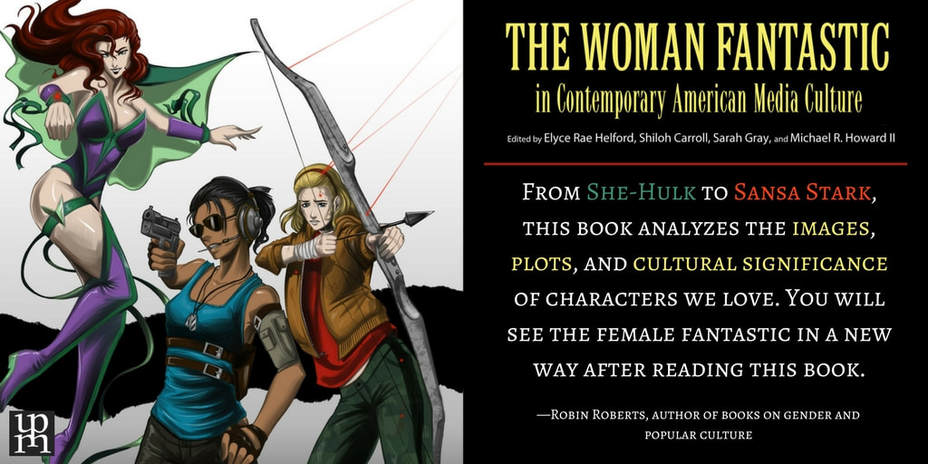updates on academic life
July 2018
The Belcourt Theatre is hosting an Essential Westerns film series in August and September. I'll be doing an introduction on 9/8. Today Belcourt, tomorrow TCM!
The Belcourt Theatre is hosting an Essential Westerns film series in August and September. I'll be doing an introduction on 9/8. Today Belcourt, tomorrow TCM!
June 2018
I've just written a book review on Women in European Holocaust Films (2017) for Jewish Film and New Media. Fascinating overview of many films I need to see...and some I'll skip.
Seeking a new publisher for my gender and Cukor book, now tentatively entitled Gendered Inquiries into the Cukor Film. Lots of changes and additions. We shall see where life takes my little monograph in the coming months.
Working on a CFP for an edited collection on noir style in diverse film genres with Chris Weedman and Alex Naylor.
Wish I had time to write my article on Billy Wilder's Ace in the Hole.
Meanwhile: surgery!
I've just written a book review on Women in European Holocaust Films (2017) for Jewish Film and New Media. Fascinating overview of many films I need to see...and some I'll skip.
Seeking a new publisher for my gender and Cukor book, now tentatively entitled Gendered Inquiries into the Cukor Film. Lots of changes and additions. We shall see where life takes my little monograph in the coming months.
Working on a CFP for an edited collection on noir style in diverse film genres with Chris Weedman and Alex Naylor.
Wish I had time to write my article on Billy Wilder's Ace in the Hole.
Meanwhile: surgery!
March 2018
The Linebaugh Library "Intro to Film Noir" evenings have turned out to be successful and so enjoyable after a delayed start of February 1. Next one is April 4 on the Femme Fatale. I put up a page on this site with the notes I'm sharing with the group. Join us!
Just found out the interview I did last fall with MTSU News on The Woman Fantastic is available as a podcast.
Also, the book is now out in paperback. $30 is just about affordable!
The Linebaugh Library "Intro to Film Noir" evenings have turned out to be successful and so enjoyable after a delayed start of February 1. Next one is April 4 on the Femme Fatale. I put up a page on this site with the notes I'm sharing with the group. Join us!
Just found out the interview I did last fall with MTSU News on The Woman Fantastic is available as a podcast.
Also, the book is now out in paperback. $30 is just about affordable!
December 2017
End of term already! Most recent news:
I'm co-chairing MTSU's 2018 Holocaust and Genocide Studies Conference.
I'll be hosting an "Intro to Film Noir" series at Linebaugh Library beginning January 4, 2018.
Best comment from a student this term: "This class will definitely be one I will regularly reflect on. You helped open my eyes to situations I was unaware of. You made me WOKE! Thank you :)"
September 2017
As time permits, I'm working on a new article manuscript addressing ethnic assimilation, and domesticity in four 1950s films starring Judy Holliday.
The Woman Fantastic in Contemporary Media Culture will soon be out in paperback!
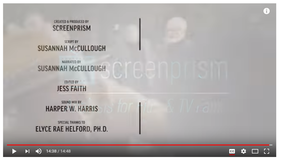
June-August 2017
I spent the summer revising my Cukor book, from a more general focus to a consideration of Gender and Sexuality. I also taught a 5-week online Summer course (ENGL 2020 Holocaust Survivor Lit), and enjoyed it!
Also: thrilled to have assisted in the making of an awesome Screenprism.com video, "Get Out Explained: Symbols, Satire, and Social Horror." Thanks for my "Special Thanks to" credit!
I spent the summer revising my Cukor book, from a more general focus to a consideration of Gender and Sexuality. I also taught a 5-week online Summer course (ENGL 2020 Holocaust Survivor Lit), and enjoyed it!
Also: thrilled to have assisted in the making of an awesome Screenprism.com video, "Get Out Explained: Symbols, Satire, and Social Horror." Thanks for my "Special Thanks to" credit!
May 2017
Life continued busy through end of term; then my son graduated HS and had emergency gall bladder surgery the same week! All is fine now.
March 2017
Sorry no posts between Dec. 2016 and now. Been wildly busy chairing a double job search committee.
Wrote Resisting Romance in Dorothy Arzner's Dance, Girl, Dance for Flicker Alley (part of publicity for their Blu-ray/DVD release, Early Women Filmmakers: An International Anthology.
Life continued busy through end of term; then my son graduated HS and had emergency gall bladder surgery the same week! All is fine now.
March 2017
Sorry no posts between Dec. 2016 and now. Been wildly busy chairing a double job search committee.
Wrote Resisting Romance in Dorothy Arzner's Dance, Girl, Dance for Flicker Alley (part of publicity for their Blu-ray/DVD release, Early Women Filmmakers: An International Anthology.
October 2016

The Woman Fantastic in Contemporary American Media Culture is now available for purchase from UP of Mississippi.
What were the first Hollywood films about rape and its impact? ScreenPrism.com.
What were the first Hollywood films about rape and its impact? ScreenPrism.com.
August 2016
Spent most of the month preparing to teach two new courses: Film Noir (ENGL 4860) and Holocaust Survivor Literature (ENGL 2020).
Why is Mr. Holmes more like Gods and Monsters than other Sherlock Holmes films? ScreenPrism.com
Spent most of the month preparing to teach two new courses: Film Noir (ENGL 4860) and Holocaust Survivor Literature (ENGL 2020).
Why is Mr. Holmes more like Gods and Monsters than other Sherlock Holmes films? ScreenPrism.com

July 2016
As the month came to an end, so did the finishing touches on an article manuscript, entitled "Postwar Hollywood Masculinity and Spencer Tracy in George Cukor’s Edward, My Son." Now in review with Film & History: An Interdisciplinary Journal.
Mid-July brought a weeklong trip to London, where I indulged in vacation energy and a combination of cinematic and theatrical events, including a tour of Shakespeare's Globe Theatre and of The Cinema Museum London. (The building is the workhouse where Charlie Chaplin went as a child.) I also saw the 100th anniversary production of the play Hobson's Choice at the Vaudeville Theatre. It's one of my favorite plays, and though I adore the movie with Charles Laughton, seeing it performed live (by Martin Shaw and company) was wonderful!
The Queering Classic Hollywood series for ScreenPrism.com now has its own page. Seven articles in total, including the most recent on gay hitmen Fante and Mingo in The Big Combo and another on queerness in James Whale's The Old Dark House.
I also wrote two pieces on race and Orange is the New Black for ScreenPrism.com:
June 2016
My series on "Queering Classic Hollywood" for ScreenPrism.com proceeds apace, with new articles coming out weekly, including studies of queerness in the following films: Holiday, Rebecca, Sylvia Scarlett, and Gentlemen Prefer Blondes.
As the month came to an end, so did the finishing touches on an article manuscript, entitled "Postwar Hollywood Masculinity and Spencer Tracy in George Cukor’s Edward, My Son." Now in review with Film & History: An Interdisciplinary Journal.
Mid-July brought a weeklong trip to London, where I indulged in vacation energy and a combination of cinematic and theatrical events, including a tour of Shakespeare's Globe Theatre and of The Cinema Museum London. (The building is the workhouse where Charlie Chaplin went as a child.) I also saw the 100th anniversary production of the play Hobson's Choice at the Vaudeville Theatre. It's one of my favorite plays, and though I adore the movie with Charles Laughton, seeing it performed live (by Martin Shaw and company) was wonderful!
The Queering Classic Hollywood series for ScreenPrism.com now has its own page. Seven articles in total, including the most recent on gay hitmen Fante and Mingo in The Big Combo and another on queerness in James Whale's The Old Dark House.
I also wrote two pieces on race and Orange is the New Black for ScreenPrism.com:
- Before "Orange is the New Black," how did "Stranger Inside" portray diversity in women's prisons?
- In Season Four of "Orange is the New Black," how has racial conflict grown and changed?
June 2016
My series on "Queering Classic Hollywood" for ScreenPrism.com proceeds apace, with new articles coming out weekly, including studies of queerness in the following films: Holiday, Rebecca, Sylvia Scarlett, and Gentlemen Prefer Blondes.
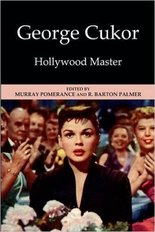
May 2016
My review of Pomerance and Palmer's George Cukor: Hollywood Master (Edinburgh Press 2015) to be published in Jewish Film and New Media 5.1 (2017).
More ScreenPrism.com pieces:
Are film images of disfigurement inflected by gender?
Queering My Fair Lady: Why Can't a Woman Be More Like a Man?
My review of Pomerance and Palmer's George Cukor: Hollywood Master (Edinburgh Press 2015) to be published in Jewish Film and New Media 5.1 (2017).
More ScreenPrism.com pieces:
Are film images of disfigurement inflected by gender?
Queering My Fair Lady: Why Can't a Woman Be More Like a Man?
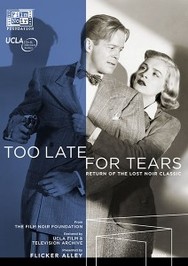
April 2016
I enjoyed the opportunity to write for Flicker Alley this month, a site devoted to celebration and restoration of classic film. In conjunction with UCLA and the Film Noir Foundation, they are releasing two newly restored films noir in May. For the release, I wrote "Femme vs. Homme in Too Late for Tears," a short piece addressing the atypical way the film's femme fatale (Lizabeth Scott) comes to dominate the male criminal, a weak homme fatale (Dan Duryea).
I published "George Cukor: Master of Noir?" in the March/April 2016 issue of Dark Pages, based on a chapter of my in-progress book.
I also wrote a few more bits for ScreenPrism.com:
How does "Thelma & Louise" display a connection to feminist film theory?
Is the Elvis Presley musical "King Creole" a film noir?
I enjoyed the opportunity to write for Flicker Alley this month, a site devoted to celebration and restoration of classic film. In conjunction with UCLA and the Film Noir Foundation, they are releasing two newly restored films noir in May. For the release, I wrote "Femme vs. Homme in Too Late for Tears," a short piece addressing the atypical way the film's femme fatale (Lizabeth Scott) comes to dominate the male criminal, a weak homme fatale (Dan Duryea).
I published "George Cukor: Master of Noir?" in the March/April 2016 issue of Dark Pages, based on a chapter of my in-progress book.
I also wrote a few more bits for ScreenPrism.com:
How does "Thelma & Louise" display a connection to feminist film theory?
Is the Elvis Presley musical "King Creole" a film noir?
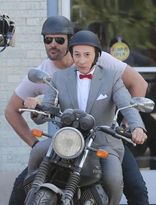
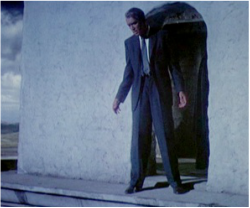
February 2016
In "Vertigo," what is the significance of the ending? for ScreenPrism
"Beauty and the Beast In a Lonely Place" for Dark Pages (Jan./Feb. 2016), a feminist reading that brings together the fairy tale and the noir film.
In "Vertigo," what is the significance of the ending? for ScreenPrism
"Beauty and the Beast In a Lonely Place" for Dark Pages (Jan./Feb. 2016), a feminist reading that brings together the fairy tale and the noir film.

January 2016
My pleasure in writing brief articles for ScreenPrism continues, including coverage of additional classics, more noir, and even a contemporary film.
Does “In a Lonely Place” adhere to or challenge traditional gender roles?
What is the significance of Helen Ramirez in "High Noon"?
What is the difference between film noir and the crime film?
What do "Bringing Up Baby" and "His Girl Friday" have in common?
What is the meaning of the ending of "Do the Right Thing"?
What is the significance of the opening scene in "The Philadelphia Story"?
My pleasure in writing brief articles for ScreenPrism continues, including coverage of additional classics, more noir, and even a contemporary film.
Does “In a Lonely Place” adhere to or challenge traditional gender roles?
What is the significance of Helen Ramirez in "High Noon"?
What is the difference between film noir and the crime film?
What do "Bringing Up Baby" and "His Girl Friday" have in common?
What is the meaning of the ending of "Do the Right Thing"?
What is the significance of the opening scene in "The Philadelphia Story"?
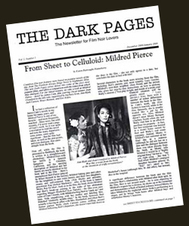
December 2015
Continuing my enjoyment of writing beyond academic journals and with newfound enthusiasm for the study of film noir, I was invited to contribute an article to the 2015 end-of-year "giant" issue of Dark Pages, a film noir publication that bridges popular, fan, and academic audiences. The issue is on The Asphalt Jungle, and I contributed a piece entitled "The Function of the Gaze in The Asphalt Jungle," which you can read here.
Continuing my enjoyment of writing beyond academic journals and with newfound enthusiasm for the study of film noir, I was invited to contribute an article to the 2015 end-of-year "giant" issue of Dark Pages, a film noir publication that bridges popular, fan, and academic audiences. The issue is on The Asphalt Jungle, and I contributed a piece entitled "The Function of the Gaze in The Asphalt Jungle," which you can read here.
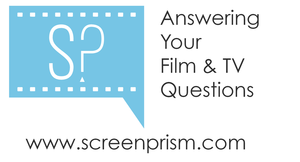
November 2015
I've begun an enjoyable relationship with Screenprism, writing answers to questions about film and tv in popular language with a scholarly bent. It's a creative site and fun to write for. My author page is up and my published posts in November answer the following questions:
What does it mean to call a woman a "Stepford Wife"?
Was the Western genre "queer" before Brokeback Mountain?
What is the significance of the setting in Key Largo?
What does "double coding" mean as an interpretive strategy for film and television?
Is there a male counterpart to the femme fatale in film noir?
Did Classic Hollywood films feature characters we would call "trans" today?
Can film noir be funny?
Why was George Cukor known as a "woman's director" and how did he feel about it?
Why do some "Star Trek" fans enjoy pairing Kirk and Spock as lovers?
When is Holocaust-related humor considered acceptable, and when does it cross a line?
What gender messages does Inside Out send to girls?
How does the 2004 remake of “The Stepford Wives” differ from the 1975 film? Why was it such a flop?
In Gilda, what is the significance of the "Put the Blame on Mame" number?
What is the difference between the male gaze and female objectification?
Is there a female gaze?
I've begun an enjoyable relationship with Screenprism, writing answers to questions about film and tv in popular language with a scholarly bent. It's a creative site and fun to write for. My author page is up and my published posts in November answer the following questions:
What does it mean to call a woman a "Stepford Wife"?
Was the Western genre "queer" before Brokeback Mountain?
What is the significance of the setting in Key Largo?
What does "double coding" mean as an interpretive strategy for film and television?
Is there a male counterpart to the femme fatale in film noir?
Did Classic Hollywood films feature characters we would call "trans" today?
Can film noir be funny?
Why was George Cukor known as a "woman's director" and how did he feel about it?
Why do some "Star Trek" fans enjoy pairing Kirk and Spock as lovers?
When is Holocaust-related humor considered acceptable, and when does it cross a line?
What gender messages does Inside Out send to girls?
How does the 2004 remake of “The Stepford Wives” differ from the 1975 film? Why was it such a flop?
In Gilda, what is the significance of the "Put the Blame on Mame" number?
What is the difference between the male gaze and female objectification?
Is there a female gaze?
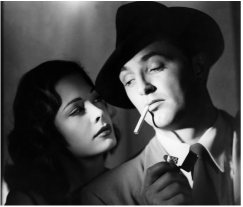
Summer 2015
I spent much of my summer feeding a recently developed interest in film noir. For films, I watched more than I can count via YouTube, archive.org, and Amazon/iTunes rentals and purchases. Some of my favorite American films include The Big Combo (1955), Born to Kill (1947), and Out of the Past (1947). Several British noir films wowed me as well, including Turn the Key Softly and It Never Rains on Sunday. I am particularly fascinated with Richard Widmark's early films, particularly Pickup on South Street (1953), Night and the City (1950 -- which also got me interested in Googie Withers), and Road House (1948 -- which also features compelling noir actress/director Ida Lupino).
In terms of scholarship, I enjoyed Vincent Brooks' Driven to Darkness: Jewish Emigre Directors and the Rise of Film Noir, Mark Bould's Film Noir: From Berlin to Sin City, and what I've read so far in E. Ann Kaplan's collection Women in Film Noir and Sheri Chinen Biesen's Music in the Shadows: Noir Musical Films. I also love Richard Dyer's piece "Homosexuality in Film Noir" from Jump Cut, 1977.
I also enjoyed some great audiobooks, including Dashiell Hammett's Red Harvest and several by Raymond Chandler.
Update: I will be teaching a topics course in film noir during Fall term 2016. I also plan to work some of what I've been reading into my Cukor book, as four of his films are labeled "noir" by various critics: A Woman's Face (1941), Gaslight (1944), Keeper of the Flame (1944) and A Double Life (1947).
I spent much of my summer feeding a recently developed interest in film noir. For films, I watched more than I can count via YouTube, archive.org, and Amazon/iTunes rentals and purchases. Some of my favorite American films include The Big Combo (1955), Born to Kill (1947), and Out of the Past (1947). Several British noir films wowed me as well, including Turn the Key Softly and It Never Rains on Sunday. I am particularly fascinated with Richard Widmark's early films, particularly Pickup on South Street (1953), Night and the City (1950 -- which also got me interested in Googie Withers), and Road House (1948 -- which also features compelling noir actress/director Ida Lupino).
In terms of scholarship, I enjoyed Vincent Brooks' Driven to Darkness: Jewish Emigre Directors and the Rise of Film Noir, Mark Bould's Film Noir: From Berlin to Sin City, and what I've read so far in E. Ann Kaplan's collection Women in Film Noir and Sheri Chinen Biesen's Music in the Shadows: Noir Musical Films. I also love Richard Dyer's piece "Homosexuality in Film Noir" from Jump Cut, 1977.
I also enjoyed some great audiobooks, including Dashiell Hammett's Red Harvest and several by Raymond Chandler.
Update: I will be teaching a topics course in film noir during Fall term 2016. I also plan to work some of what I've been reading into my Cukor book, as four of his films are labeled "noir" by various critics: A Woman's Face (1941), Gaslight (1944), Keeper of the Flame (1944) and A Double Life (1947).
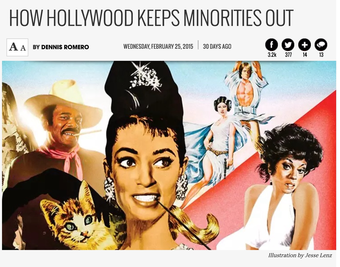
February 2015
I enjoyed a wonderful phone interview with Dennis Romero of LA Weekly for a cover story on Hollywood's treatment of minorities. I gave him a lot of history and my own opinions on whiteness and the Jewish American history of Hollywood, and was pleased to be included in the final piece.
Romero, Dennis. "How Hollywood Keeps Minorities Out." LA Weekly, 25 Feb. 2015.
I enjoyed a wonderful phone interview with Dennis Romero of LA Weekly for a cover story on Hollywood's treatment of minorities. I gave him a lot of history and my own opinions on whiteness and the Jewish American history of Hollywood, and was pleased to be included in the final piece.
Romero, Dennis. "How Hollywood Keeps Minorities Out." LA Weekly, 25 Feb. 2015.
|
This isn't new, but it's news to me. I just learned that a 1992 BBC documentary on Star Trek in which I was featured has been available on YouTube since 2013! I feel a mite embarrassed watching myself (near the end), but I also remember how very exciting it was to be featured on a TV documentary because I was a fan-scholar publishing an edited academic Star Trek book while also writing Kirk/Spock fan fiction.
|
|
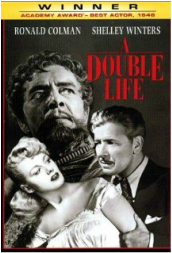
January 2015
My article, "Figuring Jewishness in George Cukor's A Double Life" (Jewish Film and New Media 1.2 [2014]) was nominated for the Society for Cinema and Media Studies' 2015 Kovacs Award for outstanding scholarship in cinema and media studies. Though I did not win, I'm proud the essay was nominated.
My article, "Figuring Jewishness in George Cukor's A Double Life" (Jewish Film and New Media 1.2 [2014]) was nominated for the Society for Cinema and Media Studies' 2015 Kovacs Award for outstanding scholarship in cinema and media studies. Though I did not win, I'm proud the essay was nominated.
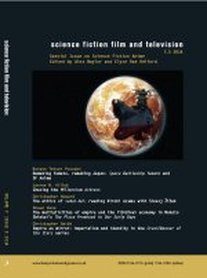
November 2014
The SF Anime special issue of the Journal of Science Fiction Film and Television I edited is now in print. Co-editor Alex Naylor (University of Greenwich) and I promise a great read.
The SF Anime special issue of the Journal of Science Fiction Film and Television I edited is now in print. Co-editor Alex Naylor (University of Greenwich) and I promise a great read.
|
September 2014
As part of the MTSU Honors College's Fall 2014 Lecture Series, I delivered a presentation entitled Placing the American Dream: The Founding of Hollywood. Based upon Neal Gabler's An Empire of Their Own and Simcha Jacobovici's documentary Hollywoodism: Jews, Movies, and the American Dream, the talk illustrates why you cannot understand the history of Hollywood without knowing the history of Ashkenazi (Eastern European) Jews in the 19th century. And you cannot understand the American Dream without knowing the history of Hollywood. |
|

